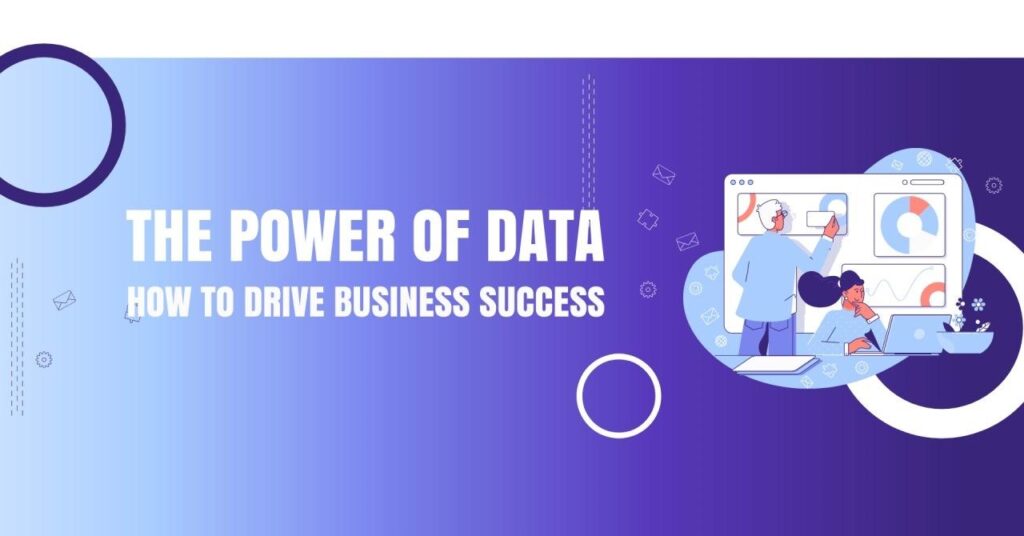In today’s fast-paced business world, data has become a valuable asset that can significantly impact the success of your company. Gone are the days when gut feeling and intuition were enough to make critical decisions. To stay competitive and make informed choices, you need to harness the power of data. In this blog, we will explore four different ways to use data to boost your business success.
Data-Driven Decision-Making
One of the most fundamental ways to use data to enhance your business success is by making data-driven decisions. Instead of relying solely on instinct or guesswork, you can leverage data to gain insights into customer behavior, market trends, and operational efficiencies.
Suppose you run an e-commerce store, and you notice a sudden drop in sales. By analyzing customer purchase history and website traffic data, you may discover that a specific product category has seen a decline in popularity. Armed with this information, you can make strategic decisions like adjusting your marketing efforts or introducing new products to counter the trend.
To implement data-driven decision-making successfully, you need to collect relevant data, analyze the data, and then act on the insights you gain. This requires your company to identify the key metrics and data sources that are crucial for your business. Next, you’ll use analytics tools and techniques to extract valuable insights. Then, of course, you can make informed decisions based on the data analysis results.
Data Science for Predictive Analytics
Data science is a powerful tool that can help businesses forecast future trends and customer behavior. By employing predictive analytics, you can anticipate market shifts and customer preferences, enabling you to stay ahead of the competition. If you’re not sure where to start, data scientist consulting can provide the expertise you need to succeed.
Imagine you run a subscription-based streaming service. By analyzing user viewing habits, historical data, and demographic information, data scientists can build predictive models to recommend content tailored to individual preferences. This not only improves customer satisfaction but also increases user engagement and retention.
If you want to harness the potential of data science for predictive analytics start with hiring data scientists. These experts can develop predictive models and algorithms tailored to your specific business needs. It’s important to collect relevant data, both historical and real-time, to train and refine your predictive models. After that, be sure to continuously evaluate and update models. Market conditions change, and so do customer preferences. Regularly reassess and update your predictive models to remain accurate and relevant.
Customer Segmentation and Personalization
Customers today expect personalized experiences, whether they are shopping online or interacting with a brand. Data can play a pivotal role in segmenting your customer base and tailoring your marketing and product offerings to individual preferences.
Consider a retail clothing store. By integrating ecommerce automation to analyze purchase history, browsing behavior, and demographic information, you can segment your customers into categories such as “frequent buyers,” “occasional shoppers,” and “discount hunters.” With this segmentation in place, you can send targeted promotions and product recommendations, increasing the likelihood of conversion.
Start with collecting comprehensive customer data. Gather data from various touchpoints, including your website, social media, and email marketing. Use segmentation tools effectively. Utilize customer relationship management (CRM) software and marketing automation platforms to segment your audience. Next, you’ll create personalized content. Make marketing campaigns and product recommendations that resonate with each customer segment.
Operational Efficiency and Cost Optimization
Data isn’t just about improving customer experiences; it can also optimize your internal processes and reduce operational costs. By analyzing data related to your supply chain, inventory management, and resource allocation, you can identify areas where efficiency gains are possible.
Let’s say you run a manufacturing company. By analyzing production data and historical maintenance records, you can implement predictive maintenance models. These models can predict when machinery is likely to fail, allowing you to schedule maintenance proactively, reduce downtime, and avoid costly emergency repairs.
To enhance operational efficiency and cost optimization using data gather relevant operational data, employ analytics tools, and implement data-driven solutions. It’s important to collect data related to your processes, machinery, and resource allocation. Then you’ll use data analytics and machine learning to identify patterns and inefficiencies. Only then can you make operational changes based on data-driven insights to streamline processes and reduce costs.






